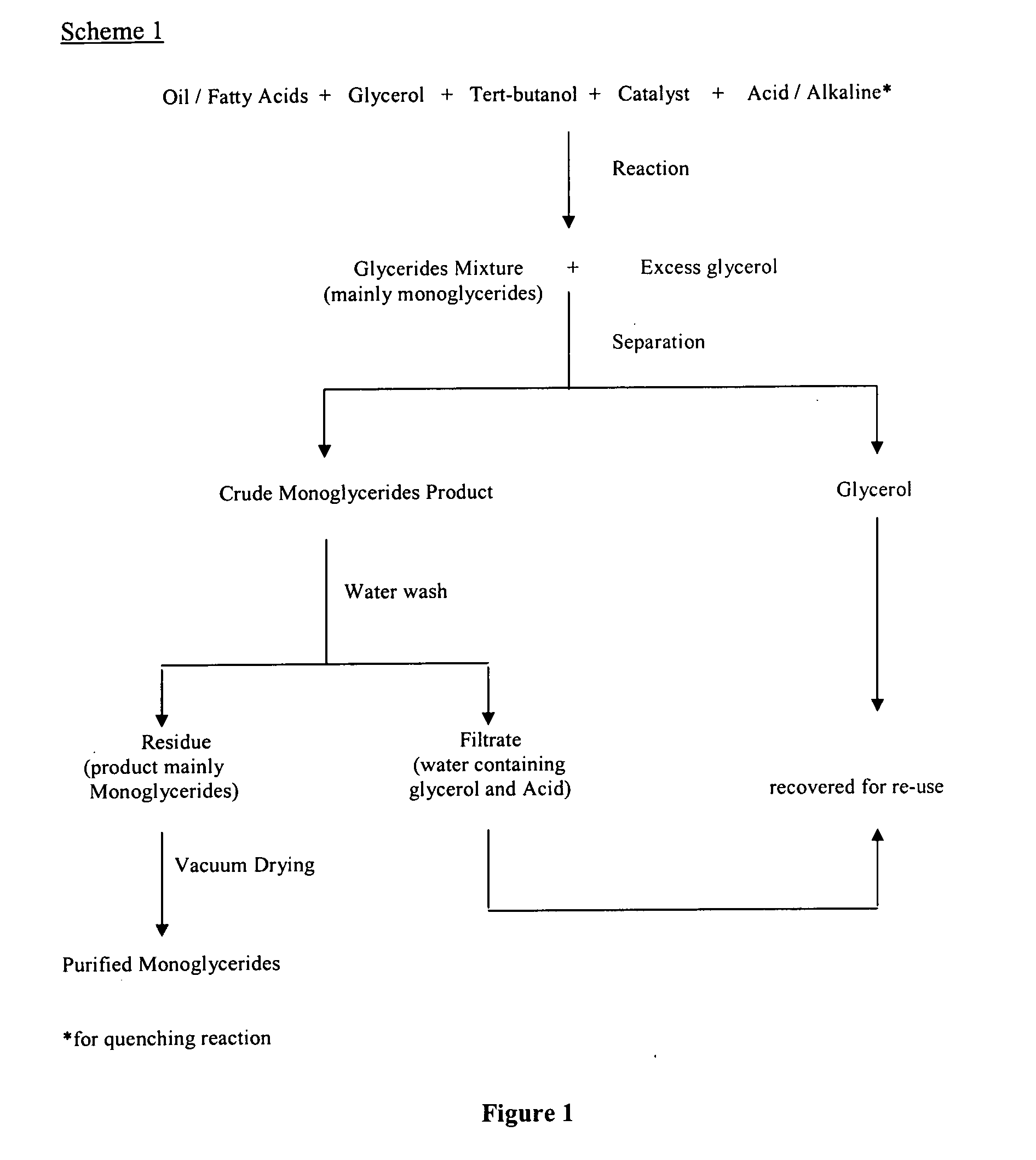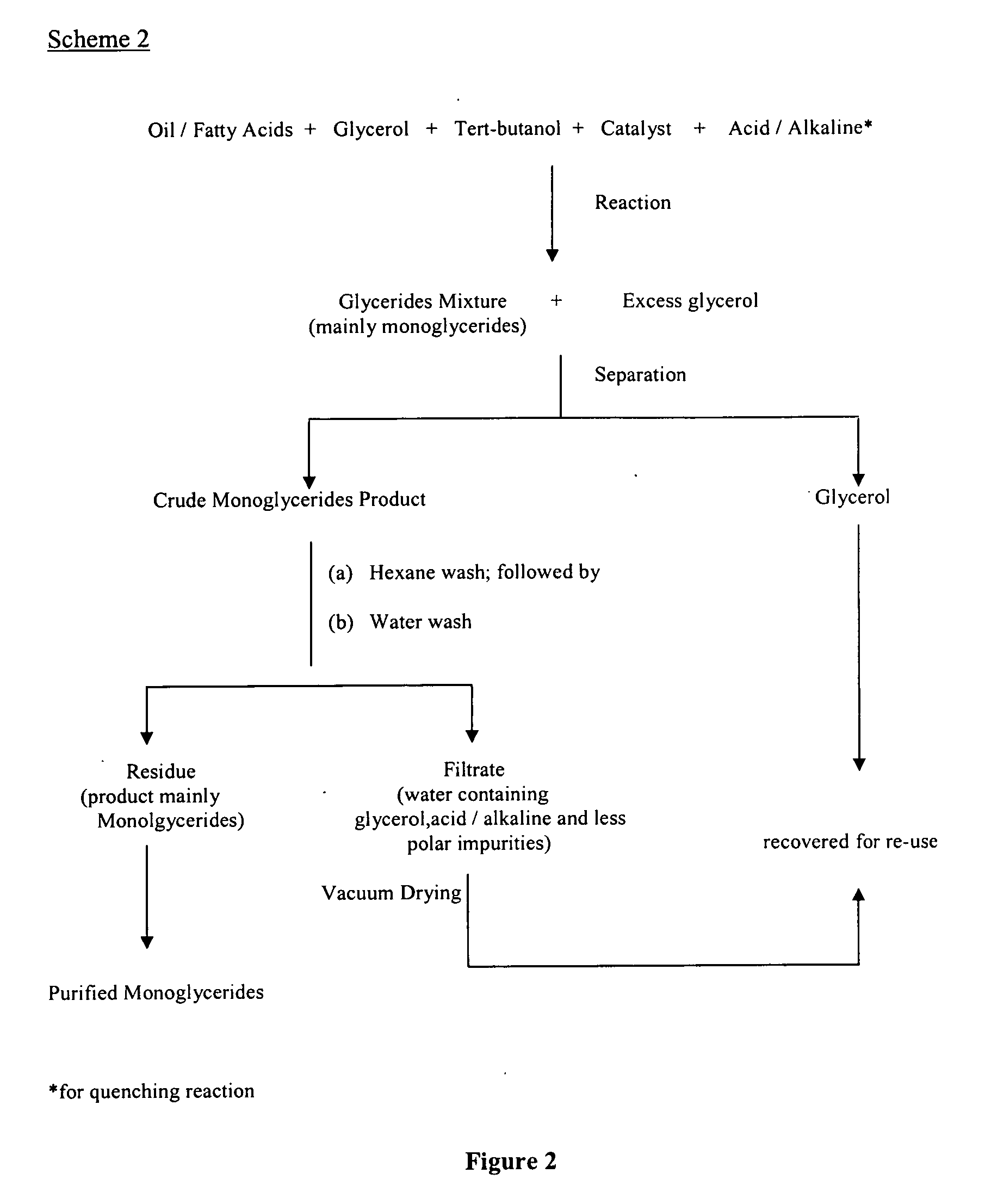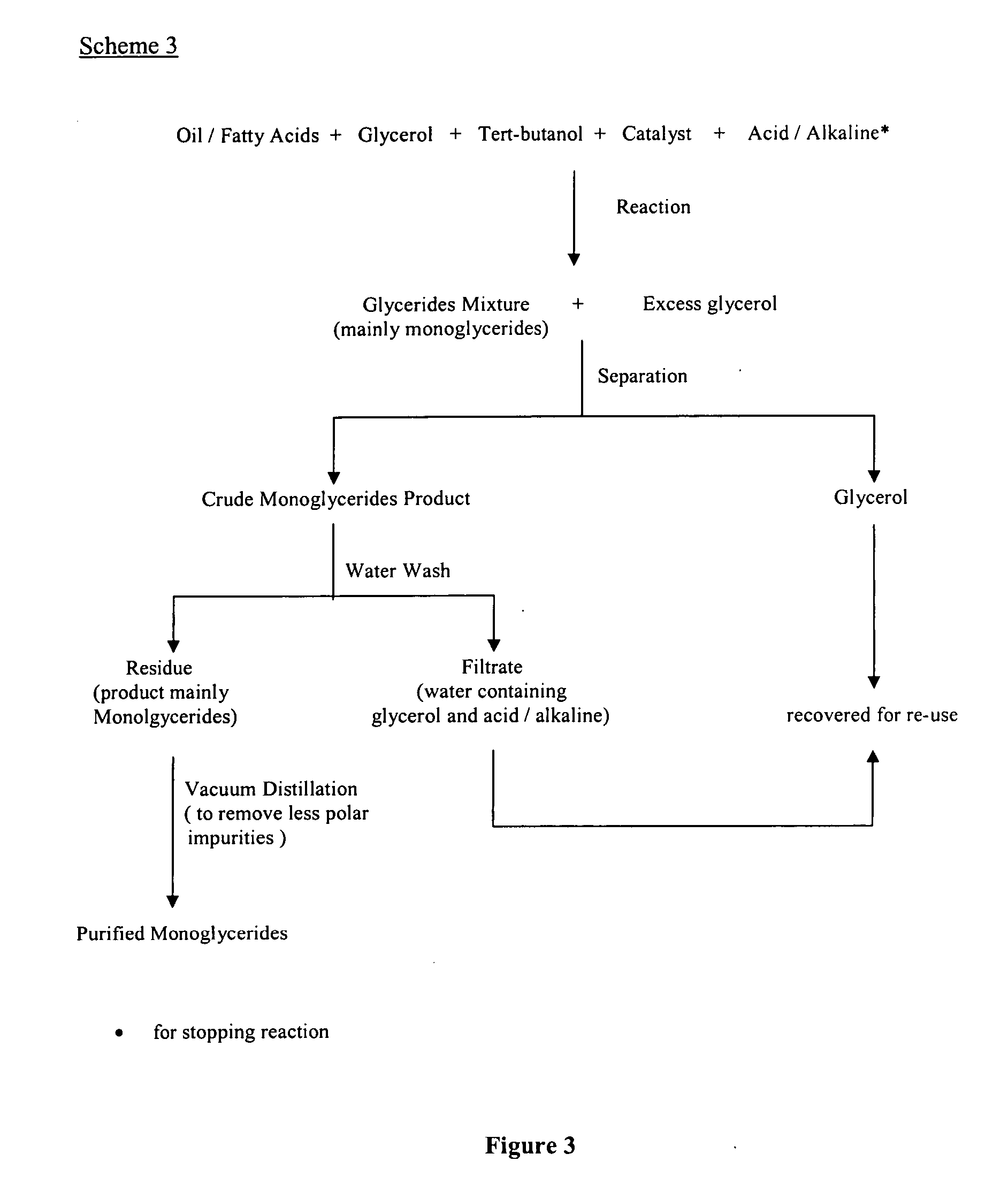High purity palm monoglycerides
a high-purity, palm-based technology, applied in the separation/purification of carboxylic compounds, fatty-oil/fat refining, fatty-oil/fat separation, etc., can solve the problems of unstudied glycerolysis involving solvents, unfavorable glycerolysis, and inability to easily separate impurities
- Summary
- Abstract
- Description
- Claims
- Application Information
AI Technical Summary
Benefits of technology
Problems solved by technology
Method used
Image
Examples
example 1
[0073] A 0.25 g of sodium hydroxide was dissolved in 25 g glycerol (anhydrous or predried under vacuum). The mixture was then dried under vacuum at above 100° C. with vigorous stirring. This was then added to a mixture containing 25 g of hydrogenated palm stearin and 50 ml of tert-butanol (dried over molecular sieves) and the reaction was conducted at 90° C. for 1 hour. Aliquot of samples from the reaction mixture were withdrawn at different time intervals i.e. 1, 3, 5, 7, 10, 20, 30 and 60 minutes for compositon analysis of respective glycerides formed. The conversion of oil to monoglycerides was monitored by gas chromatography. The reaction was stopped by quenching with citric acid or acetic acid.
[0074] The excess tert-butanol was recovered from the final product. The upper layer contained mainly glycerides mixtures while the lower layer contained mainly glycerol. The glycerol can be recovered and use in the subsequent processes.
[0075] The solidified product upon cooling on stan...
example 2
[0078] The procedures of Example 1 were repeated except sodium methoxide was used as the catalyst. Under those reaction conditions, the content of monoglycerides synthesized was above 80% after 30 minutes of reaction. The results are tabulated in Table 2.
TABLE 2Glycerolysis of Hydrogenated PalmStearin with NaOMe as CatalystReaction TimeComposition of Reaction Mixture (%)(min)MGDGTGFFA1541.810.145.52.63085.910.903.36085.911.202.9After Quench87.28.304.5After Washing86.69.61.02.7
Reaction Temperature: 90° C.
Catalyst: Sodium Methoxide (NaOMe)
Catalyst Concentration (weight percent based on the weight of oil): 1%
Oil:Glycerol (w / w) ratio = 1:1
example 3
[0079] The procedures of Example 1 were repeated except potassium hydroxide was used as the catalyst. Under those reaction conditions, the content of monoglycerides synthesized was above 80% after 7 minutes of reaction and based on the on the results, the duration of the reaction can be chosen depending on the desired glycerides composition. The results are tabulated in Table 3.
TABLE 3Glycerolysis of Hydrogenated Palm Stearin with KOH as CatalystReaction TimeComposition of Reaction Mixture (%)(min)MGDGTGFFA365.416.613.84.2564.721.011.42.8781.213.61.63.61076.117.13.73.11581.211.92.64.32079.415.10.64.93082.012.10.75.04080.014.90.75.15079.414.70.75.16077.816.60.75.012078.016.30.45.3After Quench81.011.40.66.9
Reaction Temperature: 90° C.
Catalyst: Potassium Hydroxide (KOH)
Catalyst Concentration (weight percent based on the weight of oil): 1%
Oil:Glycerol (w / w) ratio = 1:1
Oil:Solvent (t-butanol) (w / v) ratio = 1:2
PUM
| Property | Measurement | Unit |
|---|---|---|
| molar ratio | aaaaa | aaaaa |
| weight ratio | aaaaa | aaaaa |
| volume:weight ratio | aaaaa | aaaaa |
Abstract
Description
Claims
Application Information
 Login to View More
Login to View More - R&D
- Intellectual Property
- Life Sciences
- Materials
- Tech Scout
- Unparalleled Data Quality
- Higher Quality Content
- 60% Fewer Hallucinations
Browse by: Latest US Patents, China's latest patents, Technical Efficacy Thesaurus, Application Domain, Technology Topic, Popular Technical Reports.
© 2025 PatSnap. All rights reserved.Legal|Privacy policy|Modern Slavery Act Transparency Statement|Sitemap|About US| Contact US: help@patsnap.com



